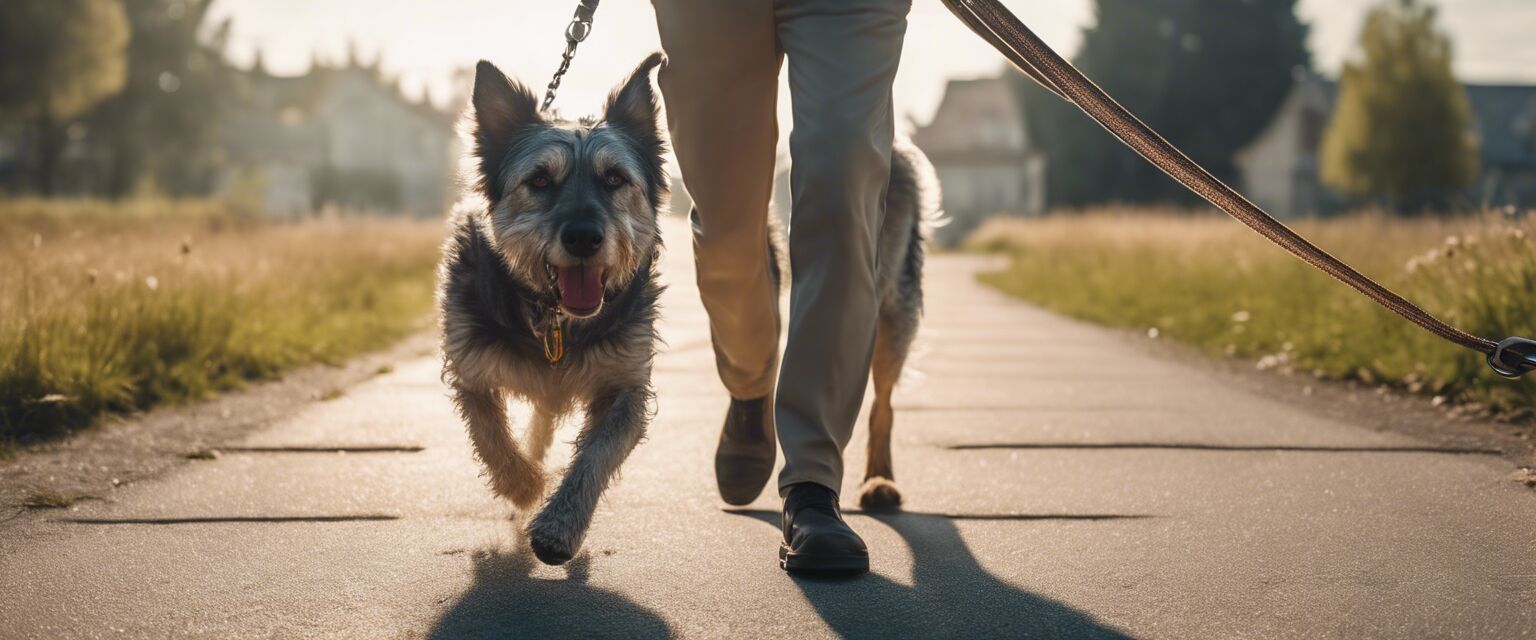
Exercise for Senior Dogs
Key Takeaways
- Older dogs need regular, low-impact exercise to maintain their health.
- Walking, swimming, and gentle play are ideal activities for senior dogs.
- Always consult with a veterinarian before starting any new exercise routine.
- Watch for signs of fatigue or discomfort during exercise.
- Adjust exercise routines based on your dog's individual health needs.
As our furry friends age, their exercise needs change. Proper exercise is crucial for senior dogs to maintain their health, mobility, and overall well-being. This article will explore safe and beneficial exercise routines specifically designed for older dogs.
Why is exercise important for senior dogs?
Exercise plays a vital role in the health of senior dogs. It helps maintain muscle mass, supports joint health, and can even improve mood and cognitive function. However, the type and intensity of exercise should be tailored to the individual dogâs needs.
Benefits of regular exercise
- Improves cardiovascular health
- Maintains a healthy weight
- Enhances flexibility and mobility
- Alleviates anxiety and boredom
- Strengthens the bond between you and your dog
Types of exercises suitable for senior dogs
When it comes to exercising senior dogs, it's essential to choose activities that are low-impact and safe. Here are some recommended types of exercise:
Walking
Walking is one of the simplest and most effective ways to keep your senior dog active. It allows them to explore their surroundings while getting the exercise they need.

Swimming
Swimming provides excellent low-impact exercise for senior dogs. The buoyancy of water supports their joints, making it easier for them to move.
Gentle play
Engaging in gentle play, such as tug-of-war or fetching a soft toy, can provide mental stimulation and physical activity.
Creating an exercise routine
Establishing a consistent exercise routine is key to reaping the benefits. Hereâs how you can create a suitable plan for your senior dog:
| Day | Activity | Duration |
|---|---|---|
| Monday | Leisurely walk | 20 minutes |
| Tuesday | Swimming | 15 minutes |
| Wednesday | Gentle playtime | 10-15 minutes |
| Thursday | Leisurely walk | 20 minutes |
| Friday | Swimming | 15 minutes |
| Saturday | Gentle playtime | 10-15 minutes |
| Sunday | Rest and recovery | - |
Signs to monitor during exercise
While exercising, itâs essential to keep an eye on your senior dog for any signs of discomfort or fatigue. Some signs to watch for include:
- Excessive panting
- Lagging behind
- Stiffness or limping
- Loss of interest in activity
- Changes in breathing patterns
Adjusting exercise for health conditions
Senior dogs may have various health issues that require modifications to their exercise routine. Always consult your veterinarian to tailor an exercise program that fits your dogâs individual needs.
Common health conditions in senior dogs
| Condition | Exercise Modification |
|---|---|
| Arthritis | Low-impact activities like swimming or short walks |
| Obesity | Increased walking duration and frequency |
| Heart disease | Short, gentle walks; avoid strenuous activities |
| Dementia | Routine and predictable walking schedule |
Tips for exercising senior dogs
Tips for keeping your senior dog active
- Start slow and gradually increase the intensity.
- Choose a comfortable and safe environment for exercise.
- Use supportive equipment, such as a harness, if needed.
- Incorporate mental stimulation, such as puzzles or scent games.
- Always provide fresh water during and after exercise.
Conclusion
Exercise is essential for the health and happiness of senior dogs. By understanding their unique needs and adjusting activities accordingly, you can help your furry friend enjoy a happy and active life in their golden years.
Pros
- Improves overall health and longevity.
- Enhances mood and reduces anxiety.
- Strengthens the human-animal bond.
- Promotes social interaction with other dogs.
Cons
- May require more supervision and adjustment.
- Risk of overexertion if not monitored closely.
- Health conditions may limit exercise options.






